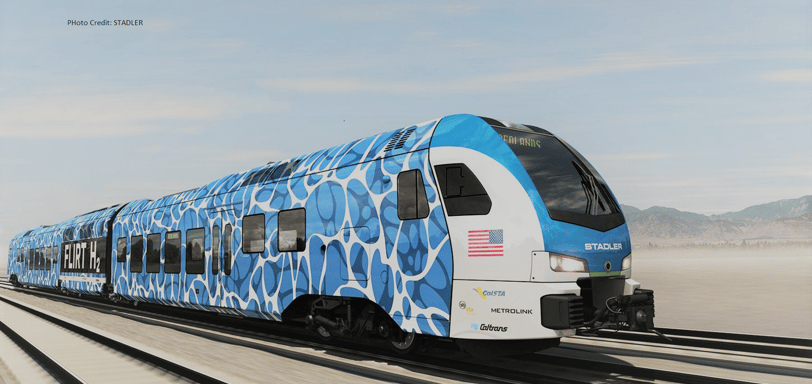Hydrogen Train in the World
The future of Hydrogen Train is brimming with potential. Countries like Germany and other European countries are making strides and India is progressing on very positive impact on sustainable railways travelling. Government around the world are investing heavily in Hydrogen Infrastructure, Hydrogen Technology and innovation, Hydrogen Trains have the potential to revolutionize sustainable rail travel


Hydrogen-powered trains are gaining traction as a sustainable alternative to diesel trains, particularly on non-electrified routes. Here's a glimpse into the development of hydrogen trains across the world:
Pioneering Leader : Germany is at the forefront of hydrogen train development. Alstom's Coradia iLint, the world's first commercial hydrogen-powered passenger train, entered service in Lower Saxony, Germany, in September 2018.
Spreading Innovation: Other countries are catching up. Alstom has supplied hydrogen trains to Canada, and Siemens and Stadler are developing their own hydrogen train models for the European and North American markets.
Focus on Regional Routes: Currently, hydrogen-powered trains are primarily used on regional routes due to limitations in hydrogen refueling infrastructure. However, with ongoing development, hydrogen fuel cell technology holds promise for long-distance travel in the future.
Stadler's FLIRT H2 Hydrogen Train Testing Breaks Records
Stadler's FLIRT H2 hydrogen-powered train has made waves in the railway industry with its impressive testing results. This innovative train recently achieved a Guinness World Record for the longest distance traveled by a hydrogen-powered passenger train on a single tank of fuel.
The record-breaking test took place in March 2024 at Stadler's test track in Pueblo, Colorado. The FLIRT H2 covered an astonishing 1,741.7 miles (2,803 kilometers) during a 46-hour test run, exceeding its advertised range of 285 miles (460 kilometers) by a significant margin. This achievement demonstrates the potential of hydrogen fuel cell technology for powering passenger trains over long distances.
The FLIRT H2's testing program is a significant milestone in the development of clean and sustainable transportation solutions. Hydrogen fuel cell trains offer several advantages over traditional diesel-powered trains, including zero emissions at the point of use and quieter operation. This technology has the potential to reduce greenhouse gas emissions from the transportation sector and create a more environmentally friendly future for railways.
What Next: Future of Hydrogen Train across world
Stadler FLIRT H2: Stadler's FLIRT H2 is a hydrogen-powered version of its existing diesel FLIRT platform. The first FLIRT H2 is currently undergoing testing in California and is expected to enter service in San Bernardino later in 2024.
Siemens Mireo Plus H: Siemens' Mireo Plus H is another hydrogen-powered train currently in the testing phase. Siemens is collaborating with Deutsche Bahn, the German national railway company, on the development of the Mireo Plus H for Hydrogen Train
